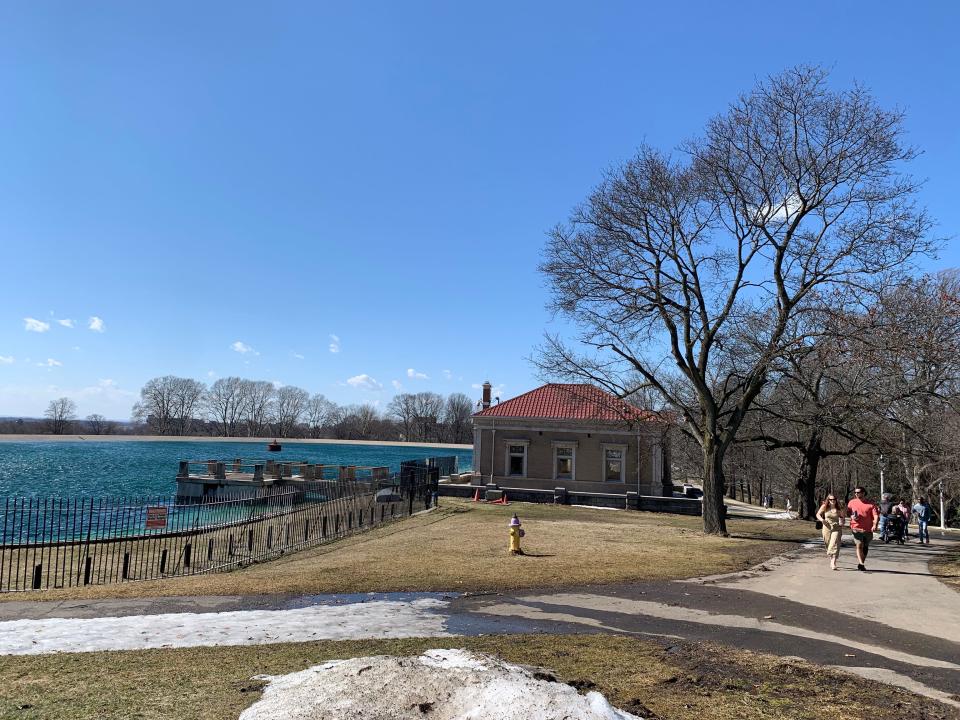Outdated and rare: Highland Park one of few uncovered, treated reservoirs left in U.S.
We all want to know where the water coming out of our taps comes from.
In Rochester, treated water from Hemlock and Canadice lakes first travels through a covered transmission reservoir located in Rush, then into a pair of uncovered reservoirs located in city parks.
That is the unusual part. Uncovered finished water reservoirs are rare in the United States.
When the U.S. Environmental Protection Agency's Long Term 2 Enhanced Surface Water Treatment Rule, or LT2, went into effect on Jan. 5, 2006, there were 81 uncovered finished water reservoirs in use nationwide.
By December 2015, there were only 24 left in all of America, including the Highland Park and Cobbs Hill reservoirs, according to an EPA report.

Changes to other open reservoirs
Since then, several more reservoirs have been covered, replaced with storage tanks or received additional treatment.
The City of Baltimore covered its two remaining treated reservoirs by December 2023 following concerns about low levels of cryptosporidium, which was the focus of the LT2 rule and can cause intestinal illness, especially for those with weakened immune systems. A third Baltimore reservoir mentioned in the EPA report, Guilford Reservoir, was replaced by two 6.8-million-gallon water tanks in 2019.
The 900-million-gallon Hillview Reservoir, located in Yonkers and providing water to New York City, is slated to be covered by 2050.
The Levine and New Street reservoirs in New Jersey will be replaced by two 2.5-million-gallon tanks and two 25-million-gallon tanks, respectively.
In 2022, the City of Los Angeles completed a ultraviolet disinfection plant at its eponymous reservoir to comply with the LT2 rule.
Another upstate New York community, Ticonderoga, was forced to abandon a deteriorating reservoir, drill wells and construct a storage tank at a cost estimated at $13 million. The public water system in the town was not only in violation of LT2, but various state health violations, including the lack of a redundant chlorination system.
Highland Park, Rochester: An historic reservoir
Highland Park Reservoir, constructed as a clay-lined reservoir in 1874, was drained in 2008 due to concerns of water leakage observed by city personnel. By 2010, the city installed a synthetic rubber liner and made other improvements like a new water line to feed the fountain and a new inlet structure.
The historic nature of the reservoir, situated in an Olmsted park, hovers over the future work done on the open water.
“A change such as covering Highland Reservoir would have a large aesthetic impact,” a March 20 city statement said. “Safe, reliable potable water remains the City’s highest priority and the various technically-sound options for providing this need to consider other impacts to the community, which is why public input and vetting of alternatives in a transparent manner will be conducted as part of the analysis recently approved by Council.”
Good Read: Rochester bridge was both a loved and loathed landmark for over 100 years
— Steve Howe covers weather, climate and lake issues for the Democrat and Chronicle and he grew up drinking well water. Have any insight into Rochester weather? Share with him at showe@gannett.com.
This article originally appeared on Rochester Democrat and Chronicle: Rochester NY has one of few treated reservoirs uncovered in U.S.

